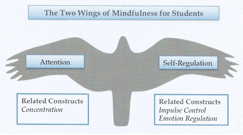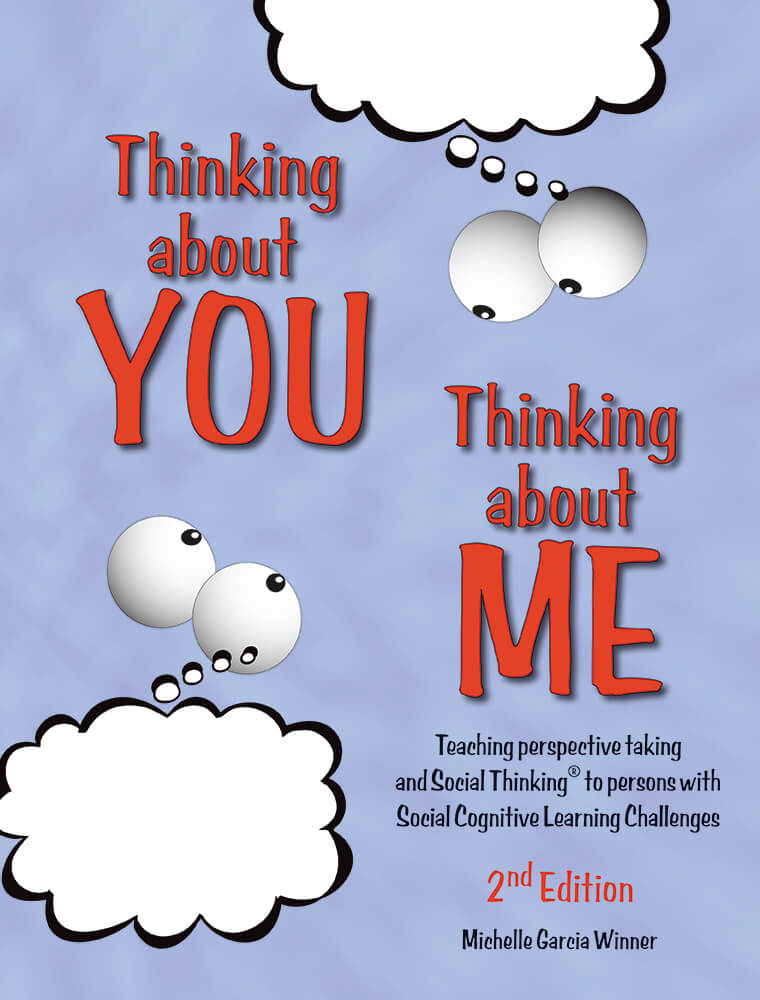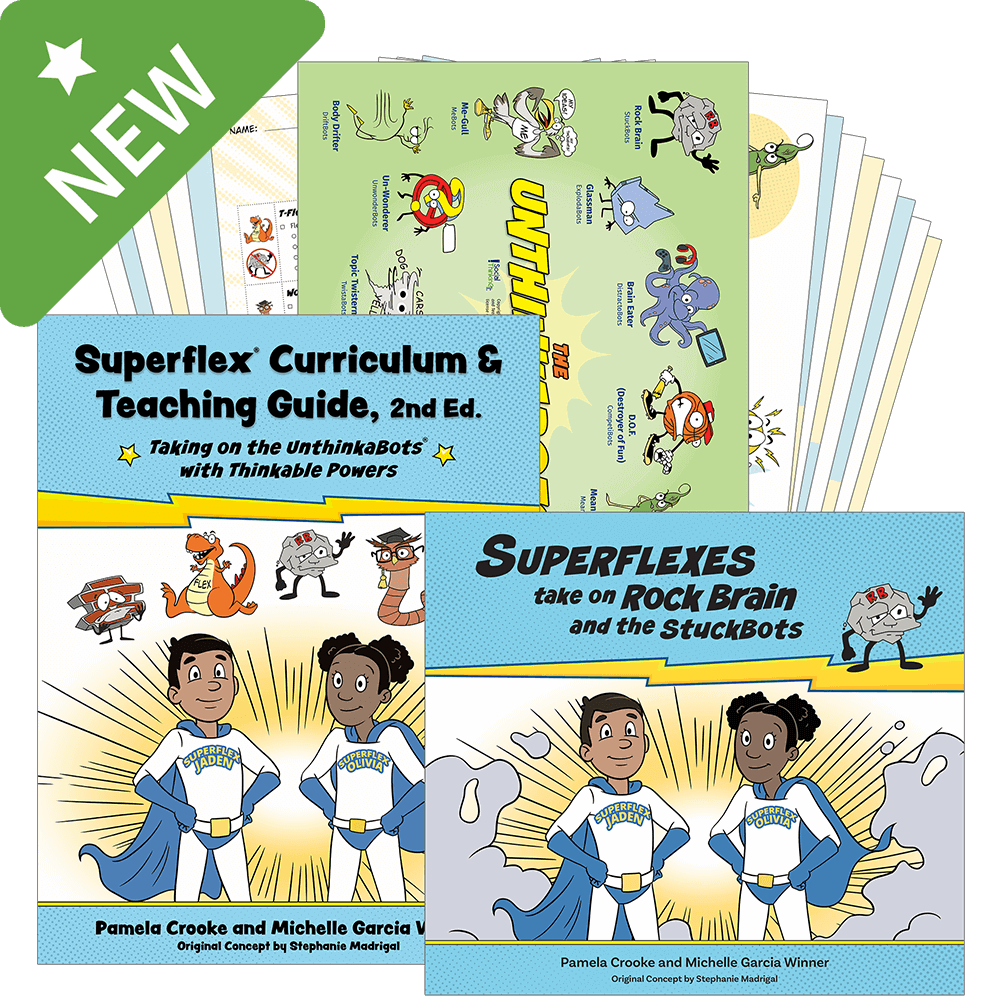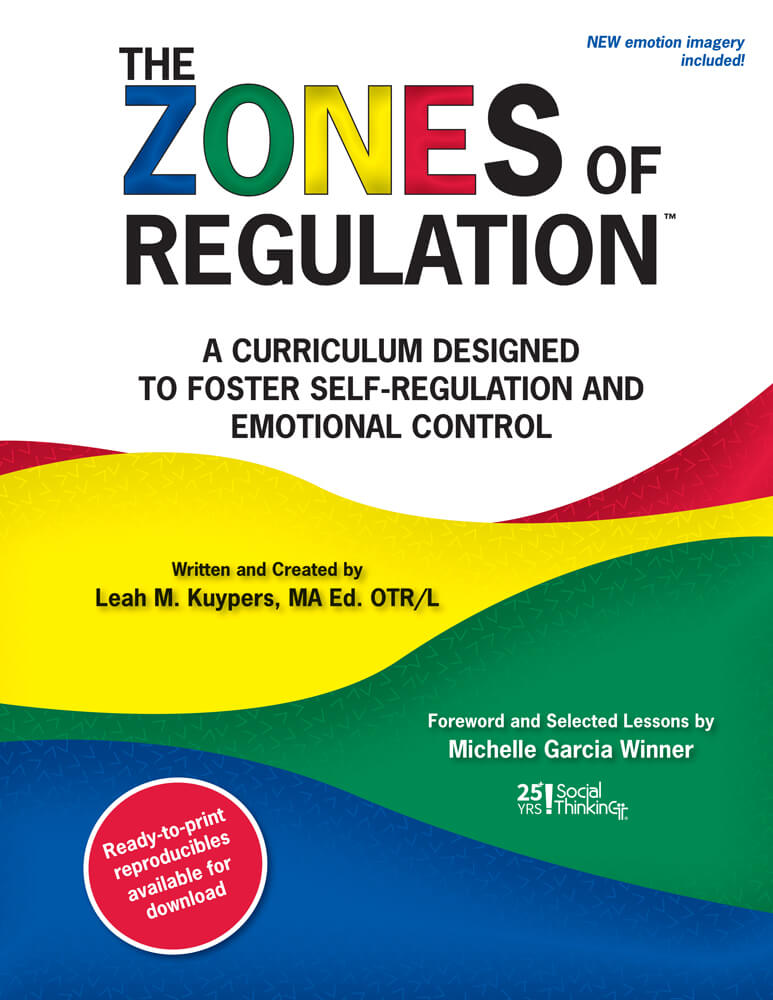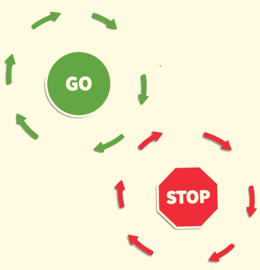© 2021 Think Social Publishing, Inc.
When Michelle asked me to write an article for Social Thinking I was more than willing to accept. You see, I found a tool that began as a journey of self-study, and has resulted in not only enhancing my life, but in transforming my teaching and the way I use the Social Thinking methodology. The tool is called mindfulness. Performance psychologist Abra Garfield (2015) explains, “mindfulness techniques stem from Buddhist practice of meditation originating about 2500 years ago. Mindfulness meditation was used widely for spiritual and intellectual development, to strengthen concentration, unlock human potential and reach a state of inner peace.” Mindfulness was introduced into Western medicine over 30 years ago by Jon Kabat-Zinn, creator of the Mindfulness-Based Stress Reduction (MBSR) program at the University of Massachusetts Medical Center. He defines mindfulness as “paying attention in a particular way: on purpose, in the present moment, and non-judgmentally.”
It seems that everywhere you turn today there is a reference to what has evolved into a secular form of mindfulness: Newsweek, 60 Minutes, NY Times, Oprah, Congressman Tim Ryan’s 2013 book and hope for A Mindful Nation, and ABC News anchor Dan Harris’s book about his public breakdown and journey to mindfulness entitled 10% Happier (2014). Randima Frenando, Executive Director of the California based Mindful Schools , states in a letter to certification participants (2015) that mindfulness has the “potential to affect the way people of all ages and backgrounds connect to themselves, to others, and to the challenges and opportunities of life.”
The graphic to the right represents the core benefits of mindfulness: attention and self-regulation. As students develop these skills, the benefits are observable in all areas of life.
Mindfulness supports the cognitive, emotional, physical, and relational aspects of teaching and learning. Benefits are being documented in focus and concentration, increased self-awareness, improved impulse control, reduced stress and greater empathy. (Refer to resource list for articles/papers/books on mindfulness).
Mindful Schools, 2013
In the 2011-2012 school year Mindful Schools partnered with the University of California, Davis to conduct the largest randomized-controlled study to date on mindfulness and children, involving 937 children and 47 teachers in three Oakland public elementary schools.
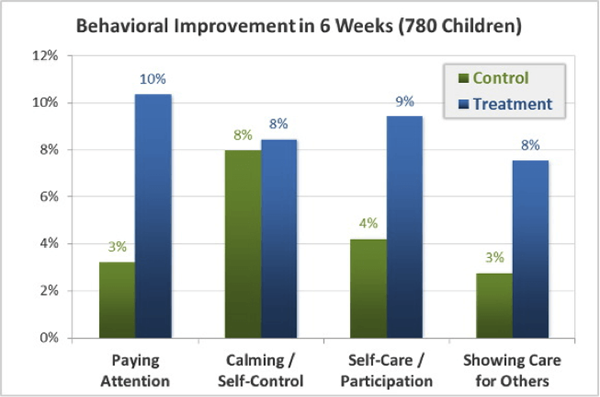
In my own experience working with students who are using mindfulness techniques, they feel they can focus better in class and parents share that their children are more cooperative and are kinder at home. Mick said, “It helps me in school to calm myself down and pay attention.” Mr. & Mrs. B. reported, “Mindfulness has helped our daughter tremendously with her anxiety. Her attention and ability to focus have improved greatly. She stops more often to think about how her comments are going to affect others before speaking. Mindfulness has helped the entire family stop and remember to live in the present when things seem chaotic and busy.” And fourth grade teacher, Mrs. D., said, “Mindfulness has changed the way I teach and has shaped our classroom community. Through mindfulness, student’s independence has grown as they have learned strategies to self-regulate and focus. They hold themselves accountable for their own actions and their success. They are kinder to each other too.”
The more I learned about mindfulness practice, the more I realized the synergy between mindfulness and Social Thinking. For instance, how often do we ask students to “pay attention”? What does it even mean to “pay attention”? What does it look like, sound like, and feel like? Pay attention to what or who? Do we even teach children what it means and how to do it? Social Thinking breaks down complex social concepts like paying attention into smaller segments that can be talked about and taught to students. It relates singular social actions to a greater whole of being our social selves. Mindfulness can contribute to a richer internal learning environment and help our students better relate in the moment of learning and experience. It integrates our “social smarts” by activating the parts of the brain that are responsible for attention, emotion, and behavior. Incorporating the practice provides students with a foundation upon which learning more specific strategies, like those of Social Thinking, can take root, grow, and blossom in a student. This includes areas such as executive functioning, perspective taking, planning, organization, time management, and metacognition. Mindfulness allows space for response inhibition— thinking before you act–emotional control, sustained attention, task initiation, flexibility, and goal directed persistence. The practice of mindfulness includes self-monitoring and self-evaluation.
Like the strategies introduced in Social Thinking, such as “stop and think” that focus at the thinking level of our interactions, mindfulness helps students insert a “pause” to consider their own and others’ thoughts and feelings before acting.
Mindfulness creates space, changing impulsive reactions to thoughtful responses.

Mindful Schools
I have been using Social Thinking strategies for many years: Social Detective, the Superflex® curriculum with the Unthinkables and the Thinkables, the ILAUGH Model, the Four Steps of Communication, the Four Steps of Perspective Taking, and many others. The connection between mindfulness and Social Thinking came to life one day while reading Superflex Takes on Glassman and the Team of UnthinkaBots with a class. The teacher was explaining one strategy, self-calming, as a way to defeat Glassman: “calming your body when you notice that you are becoming frustrated.” I watched as the students sat still and breathed. They tightened and then relaxed their muscles. I thought to myself, “that’s similar to what we do in mindfulness.”
Mindful Schools is a non-profit organization based in Oakland, California. Founded in 2007 their mission is to lead the integration of mindfulness into education. They have trained educators, social workers, psychologists, parents, and other adults from over 60 countries, impacting more than 200,000 youth globally.
Lesson One in the Mindful Schools curriculum for K-5 goes like this:
“Has anyone ever heard the word Mindfulness? Mindfulness is paying attention to what is happening in the present moment. Mindfulness can help us learn to pay close attention to many things. It can also help us calm down when we are angry, sad, frustrated, or have any difficult emotion. Mindfulness can help us feel happy too. It can also help us focus and do well in school, sports, or music.
Mindful Bodies: There are a couple very important things that help us be mindful. The first thing that will help us during mindfulness is to keep our bodies very still… let’s try that? The second thing automatically happens when we get still… what is the noise like in here right now, when you get still? Yes, it gets very quiet. Now we have still bodies and quiet bodies. That’s what I call our mindful bodies. Now, let’s close our eyes and just sit like that for one minute.
Mindful Listening: There are a lot of things that we can learn to be mindful of. Today we are going to practice being mindful of sound. (Introduce the bell.) Get your mindful ears on. That means you listen very carefully, the whole time. So, see if you can pay attention from the very first moment you hear the bell all the way to the end. Raise your hand when the sound is gone. (Ring bell.) You have just learned how to pay attention better. In mindfulness, we learn how to focus and pay close attention to many things. Do you think it’s important to be able to focus? Why? When could you use mindful listening?”
As with Social Thinking, mindfulness also teaches us how to notice when we are uncomfortable and this can be tied directly to strategies and lessons in Social Thinking: notice any tightness, notice your breathing, notice how it feels when Rock Brain or any other Unthinkable is invading your thoughts. Both Social Thinking and mindfulness encourage a “we think” mindset, which in turn can build empathy and heartfulness, essential traits for conquering Unthinkable characters like “Mean Jean” and “One- Sided Sid.” The interrelatedness of other concepts between Social Thinking and mindfulness became apparent the more I taught both. For instance, the five Power Pals (part of Social Thinking’s Superflex curriculum) are closely aligned:
- Decider provides the ability to stop and describe what is happening within the student’s body (in mindfulness that’s body scan)
- Social Detective provides the ability to stop and observe the situation (paying attention to what is happening in the moment, on purpose, and without judgment)
- Brakester provides the ability to stop and think (stimulus, mindfulness, response, self-regulation)
- Flex Do Body provides the power to use flexible thinking (mindful breathing, problem solving, planning, and organization)
- Cranium Coach provides positive self-talk (self-awareness, emotional intelligence, well-being, confidence, resilience).
The synergy and alignment between Social Thinking and mindfulness can be seen in other ways, as this chart demonstrates.
|
SOCIAL THINKING |
MINDFULNESS |
|
Observe |
Notice without judgment |
|
Social awareness - sharing space effectively with others |
Heartfulness, empathy and compassion |
|
Social attention |
Cultivates self-awareness, emotional intelligence, kindness and well-being |
|
Self-regulation |
Confidence and resilience |
|
Social anxiety and whole world anxiety |
How to be at home in your own skin; how to calm the mind and body |
|
Thinking with your eyes |
Mindfulness of sight |
|
Whole body listening |
Mindful bodies and listening; mindfulness of breathing; body awareness |
|
The group plan, thinking thoughts and feeling feelings |
Heartfulness, generosity, sending kind thoughts, emotions, and thoughts |
Mindfulness and Social Thinking teach us to manage our emotions in and out of the classroom by developing stronger mind-based strategies, which in turn promote greater self-awareness. Once I started noticing the wonderful ways that the two methodologies complement each other, it’s been one “aha” moment after another. Each time I pick up a different Social Thinking tool, I find a way it can be taught with mindfulness. There is an art and a science to learning how to self-regulate and shift attention, to pay attention to ourselves, others, the situation, and then figure out how to respond in the moment to keep ourselves and others comfortable in the experience. By teaching students the fundamentals of mindfulness, the stage is set to develop the skills students need to be effective social thinkers. Then practice, practice, and more practice make both stronger. Together, Mindfulness and Social Thinking can help our students develop the necessary skills to be successful in life.
BIO
Maura Fox, MS, CCC, is a speech-language pathologist and National Board Certified teacher in Exceptional Needs who specializes in working with children and teens with social differences, executive function disorder, and emotional/behavioral difficulties. She recently began serving clients in private practice at the Fox Center for Awakening Learning Potential, LLC in Glens Falls, NY. Her mission is to be an agent of change, dedicated to identifying and removing barriers to learning for striving students, guiding them to reach their full potential.
Resources and References
Mindful Schools Program and Teacher Training: www.mindfulschools.org
The Way of Mindful Education with Daniel Rechtschaffen: www.mindfuleducation.com
Flor Rotne, N. & Flor Rotne, D. (2013). Everybody present: Mindfulness in education. Berkeley, CA: Parallax Press.
Garfield, A. (2015). Mindfulness meditation Brisbane. Retrieved June 15, 2015.
Harris, D. (2014). 10% happier. Sydney, Australia: HarperCollins .
Kabat-Zinn, J. (1994). Wherever you go, there you are. New York: MJF Books.
Lee, J., et al. (2008). Mindfulness-based cognitive therapy for children: Results of a pilot study. Journal of Cognitive Psychotherapy, 22(1), 15-28.
Mindful Schools. (2014). Mindfulness curriculum: kindergarten-5th grades. Emeryville, CA: Mindful Schools.
Napoli, M., Krech, P., & Holley, L. (2005). Mindfulness training for elementary school students: The Attention Academy. Journal of Applied School Psychology, 21(1), 99-125.
Rechtschaffen, D. (2014). The way of mindful education: Cultivating well-being in teachers and students. New York: W.W. Norton & Company.
Ryan,T. (2012). A mindful nation: how a simple practice can help us reduce stress, improve performance, and recapture the American spirit. New York: Hay House.
Sautter, E., & Wilson, K. (2011). Whole body listening Larry at school. San Jose, CA: Think Social Publishing Inc.
Schoeberlein, D. (2009). Mindful teaching and teaching mindfulness: A guide for anyone who teaches anything. Boston, MA: Wisdom Publications.
Semple, R., Reid, E., & Miller, L. (2005). Treating anxiety with mindfulness: an open trial of mindfulness training for anxious children. Journal of Cognitive Psychotherapy, 19(4), 379-392.
Siegel, D., et al. (2007). Mindfulness training modifies subsystems of attention. Cognitive, Affective, and Behavioral Neuroscience, 7 (2), 109-119.
Singh, N., et al. (2006). Mindful parenting decreases aggression, noncompliance, and self- injury in children with autism. Journal of Emotional and Behavioral Disorders, 14(3), 169-177.
Singh, N., et al. (2007). Mindful parenting decreases aggression and increases social behavior in children with developmental disabilities. Behavior Modification, 31(6), 749-771.
Singh, N., et al. (2007). Adolescents with conduct disorder can be mindful of their aggressive behavior. Journal of Emotional and Behavioral Disorders, 15(1), 56-63.
Zylowksa, L., et al. (2008). Mindfulness meditation training in adolescents and adults with ADHD: A feasibility study. Journal of Attention Disorders, 11(6), 737-746.










